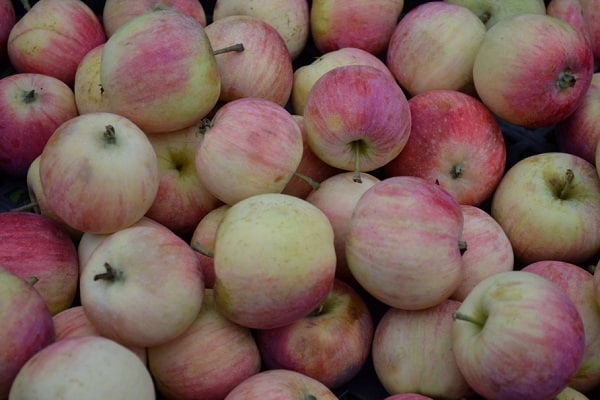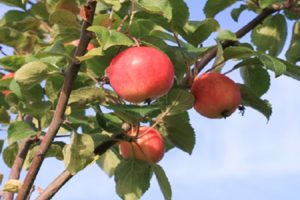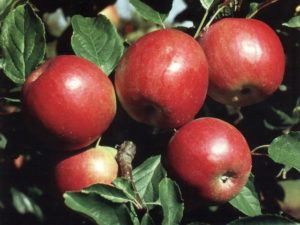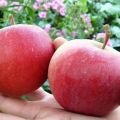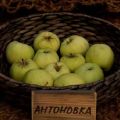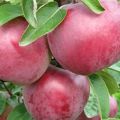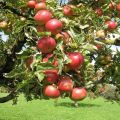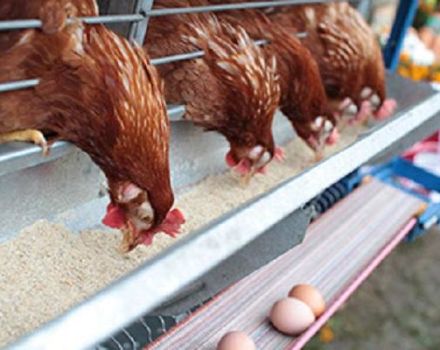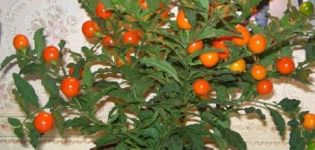Description of the apple variety Aboriginal and the main characteristics of the culture, growing regions
Summer apple trees of the Aboriginal variety are suitable for growing in cold regions with frosty winters. They are undemanding to care for, have good winter hardiness and immunity to diseases. This variety makes it possible to get a good harvest in your own garden without much effort and in not the most favorable climatic conditions.
Description of apple tree Aboriginal
This is a semi-cultured summer variety with small apples that have a sweet and sour taste and an attractive appearance. Thanks to the latter, they can often be found on market counters - beautiful fruits look delicious and sell well. Apples ripen in August.

An interesting feature is that one tree can have cells with different genetic material, as a result of which fruits that differ in size and even taste will grow on different branches, while belonging to the same variety.
The tree is of medium height, compact, sparse branches, due to which the fruits are well illuminated by the sun even in the depths of the crown and have a uniform “blush”. The branches themselves are thick, dark, grayish-brown in color. The leaves are also dark and large. The crown has a rounded-oblong shape.
Detailed descriptions of fruits, planting and care requirements can be found in the relevant paragraphs.
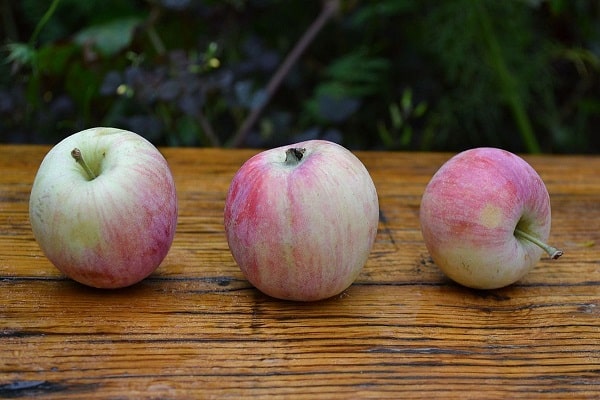
Breeding history
The variety was officially registered and entered in the register in 1974. His “ancestors” are apple trees Rebristoe and Avgustovskoe Far East, and Aleksey Vasilyevich Bolonyaev, an outstanding specialist in this field, laureate of the USSR State Prize, was engaged in selection.
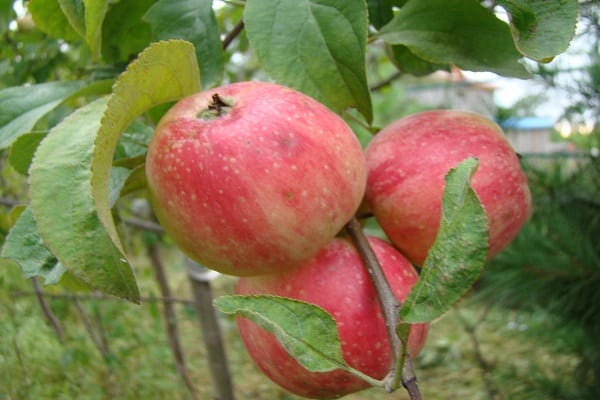
Pros and cons of the variety
Aboriginal Benefits:
- high frost resistance;
- immunity to scab and moniliosis;
- the appearance of the fruit;
- unpretentious care.
Among the shortcomings are noted:
- short term storage of apples;
- the relative fragility of the tree;
- tangible sourness in the taste.
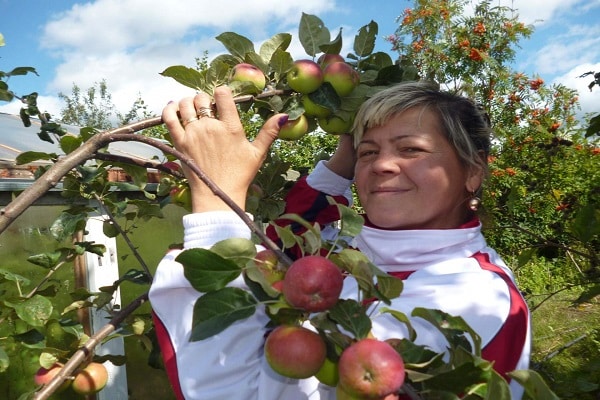
Frost and disease resistance
Apple trees winter well, so they can grow in regions with harsh winters - this is one of the strengths of the variety. A frost-resistant rootstock can be grown in the northernmost regions. In order for trees to survive the winter better, they need to be properly prepared. In the fall, when all the fruits are harvested, they spud the earth, fertilize it with peat, compost or humus. The trunk is sheltered from damage by rodents.
Additionally, the soil is laid around the trunk with straw to protect the root system from frost.
Full resistance to scab and monilial burn, which simplifies planting maintenance and saves the gardener time. These qualities are another plus for choosing a variety for Far Eastern gardens, where fruit trees often suffer from scab due to high air humidity.

Ripening and fruiting
Flowering begins in May, early June. The apple tree has small fragrant white flowers. The variety is capable of self-pollination, but only partially; for greater productivity, it is recommended to use pollinating trees of the varieties Avgustovskoe Far East, Amurskoe Urozhainoe.
Apple trees begin to bear fruit in the 3rd year after planting - single ones, in the 7th year they bloom en masse and yield a harvest. Aboriginal - summer, fruit ripening occurs in the second half of August. This is one of the earliest species. Apples are eaten straight from the tree, the most ripe and juicy ones are often blown away by the wind.

Young trees (3-5 years old) in the first years of fruiting bring up to 8 kg of yield, over time this figure can increase to 50-55 kg. Apple tree Aboriginal bears fruit every summer, the yield can vary from year to year.
Properties and uses of apples
Since a tree can have different genetic material ("chimera"), some branches ripen larger fruits than the bulk. They will ripen later, in September.
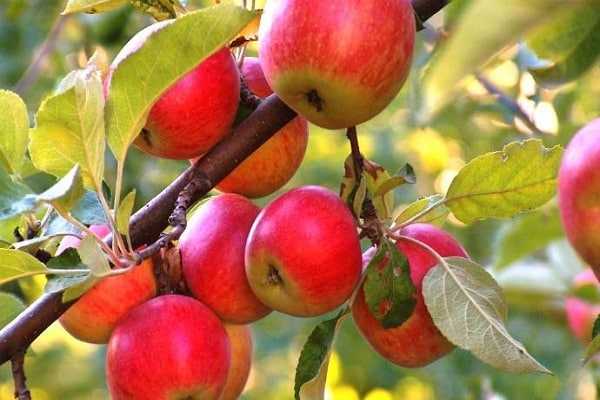
Opinions about the taste of apples vary, they are sweet and sour, a little tart. They are rather small in size, on average - 50-60 g, rarely grow to 100 g, some specimens - 130-140 g. The shape of the fruit is round. The pulp is juicy and crispy. The peel is smooth, glossy, and has a light cream color with pink-red ripples all over.
Apples Aboriginal are consumed fresh, they are well suited for baking, for jam, compotes for the winter, pickling.
The disadvantage of the variety is the short shelf life of the harvested fruits, up to 20 days, in the refrigerator or cellar - a little more than a month.

Where is it better to grow
The variety is popular in the Far East, it is found in the southern part of the Khabarovsk Territory, in the Primorsky Territory. For colder regions (Sakhalin) Aboriginal is grown on a frost-resistant rootstock.
In Siberia and the Urals, it is possible to grow these apple trees if you form a crown in the form of a slate - a low-growing tree with a flat top. Small, stocky trees resist cold weather better and channel more nutrients into ripening, which is important in harsh climates.
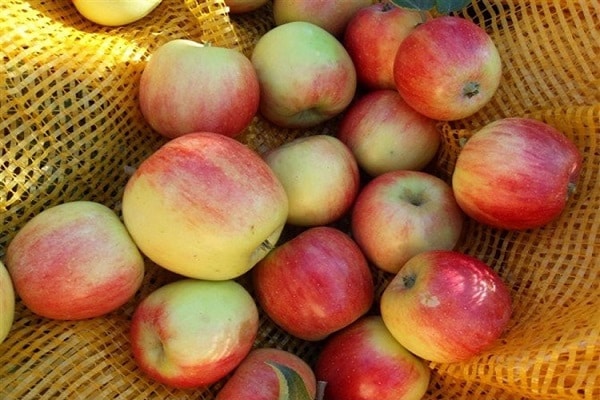
Planting begins in the spring, when the ground has completely thawed out, and the air temperature during the day does not drop below 10 degrees. For seedlings, sunny or semi-shady places are chosen. The soil is chosen non-acidic, otherwise dolomite flour or chalk is added.
Before planting, the land is fertilized with organic matter - manure, humus. For the first 2 months, the seedling is watered every week, adult apple trees - three times during the warm season, at the beginning of summer, during the ovary of apples and in autumn.

Thus, the advantage of the Aboriginal variety is the ability to grow a decent harvest of apples in the Far Eastern Territory, in frosty winters and short summers. Many people like their taste, and the benefits of fresh fruit from their own garden are priceless. With the necessary care, the apple tree will regularly delight the owners with a rich harvest.
